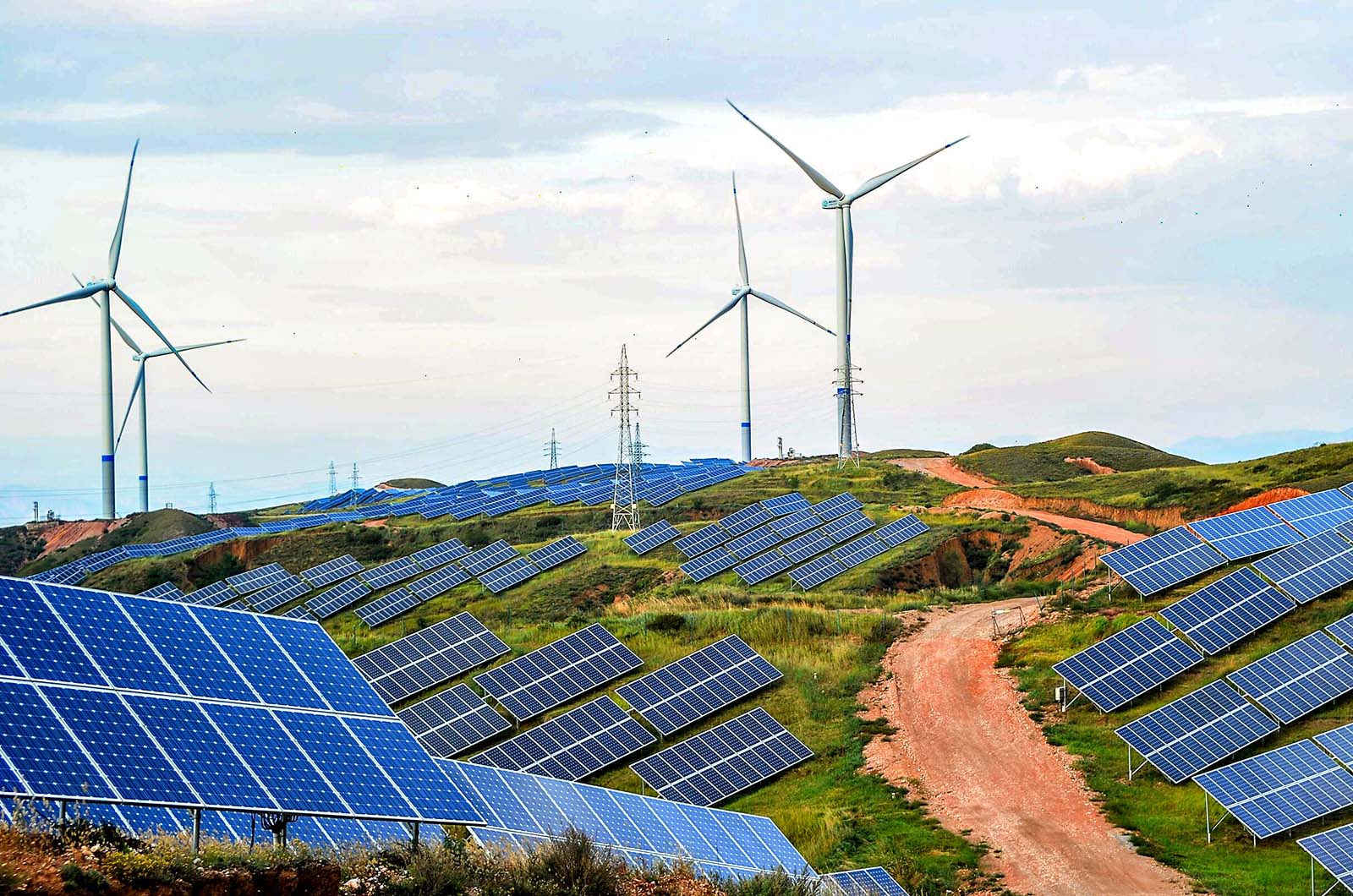Why Are Top Companies Pushing for 100 Percent Renewable Energy?

Solar panels and wind turbines are pictured on a barren mountain in Zhangjiakou, Hebei Province of China. Many senior executives believe that science-based targets meant to cut greenhouse gas emissions are driving innovation.
Photo: VCG
A key development in recent years has been the growing number of companies setting science-based targets to cut greenhouse gas emissions. These are goals that commit firms to reduce their emissions in line with the decarbonization rate required by the landmark and global Paris Agreement. The Science-Based Targets initiative is a collaboration between CDP, the United Nations Global Compact, the World Resources Institute and the World Wide Fund for Nature.
Tough Targets Drive Progress
Achieving these targets is tough. However, the challenge appears to be driving new innovations that are cutting costs and creating new products. A recent survey by YouGov and the Science-Based Targets initiative found 63 percent of senior executives believe these targets are driving innovation.
For example, Kellogg’s has developed a fuel cell technology at one of its waffle-making facilities in San Jose that generates electricity. Sony has developed a new type of plastic called SORPLAS, which is made up of 99 percent recycled material, helping to reduce CO2 emissions by nearly 80 percent during manufacture. Both cite climate science as a driver for these developments.
The YouGov survey also found that 79 percent of executives surveyed found strengthened brand reputation to be one of the most significant business benefits for their company from committing to science-based targets.
More Low-Carbon Products and Markets
The number of low-carbon products and services on the market is also growing. In total, 52 percent of executives expect at least half of their products and services to be low-carbon by 2028. And nearly one in five predict 100 percent of their products will be low-carbon in ten years’ time, according to the YouGov survey. The survey defined low carbon as “causing only a relatively small net release of carbon dioxide into the atmosphere.”
More than 100 of the world’s most influential companies have committed to source 100 percent of their energy from renewables by 2030.
This is backed up by research from environmental nonprofit CDP, which found a 20 percent rise in the number of companies offering low-carbon products and services, such as electric vehicles and zero-energy buildings, last year. For example, Nissan launched its Nissan Leaf electric car in 2010 and has since sold over a quarter of a million units globally. The EV market as a whole is projected to surpass $1 trillion by 2030, while 30 percent of new car sales are expected to be zero-emissions or plug-in hybrid.
Skanska AB is developing and constructing buildings and infrastructure that enable their users to reduce and avoid GHG emissions in both construction and operation. It built Solallén, Sweden’s first zero-energy neighborhood, which generates more energy than it uses, saving both carbon and energy costs.
A new report this month will highlight how new low-carbon markets such as energy storage systems are being created—driven by increasing demand for renewables. Requirements for energy storage are set to grow from current levels of 10 gigawatts to 125 GW by 2030, creating an investment opportunity of $103 billion.
Using 100 Percent Renewable Energy
Perhaps most significantly, the use of renewable energy by companies is expanding quickly. The RE100 initiative has seen more than 100 of the world’s most influential companies—including the likes of BT and Unilever—commit to source 100 percent of their energy from renewables by 2030. CDP found that the number of sampled companies with a renewable energy consumption target had increased by 23 percent in a year.
Big companies are using their power as buyers to encourage firms in their supply chains to go green. Last year CDP recorded 4,800 suppliers achieving collective reductions equivalent to 551 million metric tons of carbon—more than Brazil’s total emissions in 2016. That’s a significant increase from the 434 million metric tons reported by suppliers in 2016.
For example, Walmart is directly working with its suppliers on “Project Gigaton”—its approved science-based target to remove a gigaton (one billion metric tons) of emissions from the global value chain by 2030.
There is a long way to go if we are to truly transition to a low-carbon economy, but it is encouraging to see that corporates are picking up the pace. If corporate targets and the products and services they facilitate are based on climate science, then our chances of maintaining a thriving economy and a sustainable environment will be greatly improved.






